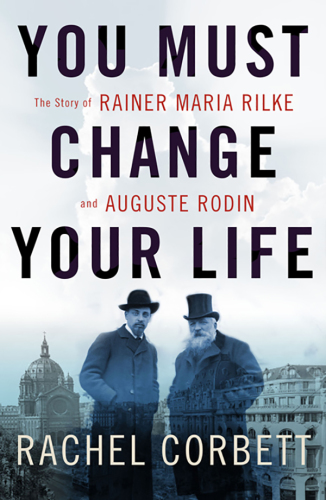
You Must Change Your Life
The Story of Rainer Maria Rilke and Auguste Rodin
کتاب های مرتبط
- اطلاعات
- نقد و بررسی
- دیدگاه کاربران
نقد و بررسی

May 30, 2016
First-time author Corbett traces the lives of two great artists, poet Rainer Maria Rilke and sculptor Auguste Rodin, in a smartly written biography. Corbett begins, somewhat shakily, by sketching in Rilke and Rodin’s lives before their meeting. Despite these two mini-biographies being roughly equal in length, the Rodin piece feel rushed and the Rilke piece feels drawn out. When they do meet, the book kicks into gear. Corbett skillfully tracks Rilke’s process of finding his artistic voice, and by the time of Rilke and Rodin’s famous split, though it’s clear that both could be rather unpleasant people, the reader fully sympathizes with their pain over their estrangement. The pair’s eventual reconciliation is thus all the more satisfying. Also of note are the book’s glimpses of the figures in orbit around Rodin and Rilke’s story, including George Bernard Shaw, Jean Cocteau, and Paul Cézanne, as well as Louise Andreas-Salomé, a poet who was Rilke’s lover and muse, and Clara Westhoff, a student of Rodin’s who eventually married Rilke. Rilke and Rodin, both intriguing figures in their own right, are only the more fascinating when treated together as fellow artists and close friends. Agent: Larry Weissman, Larry Weissman Literary LLC.

July 1, 2016
An exploration of "two artists fumbling through the desultory streets of Paris, finding their paths to mastery."In 1902, living near the artist colony in Worpswede, Germany, Rainer Maria Rilke (1875-1926) and his wife, Clara Westhoff, had a new child when Rilke received a commission to write a monograph on Auguste Rodin (1840-1917). Rilke left his family and traveled to Paris to meet the man for whose art he had a near-religious devotion. In Rodin, he expected to find a muse, a master, and a savior. He asked, "how should one live?" When Rodin replied, "work, always work," Rilke took it as gospel, leading a mostly solitary life and devoting himself to his poetry. He sacrificed his family for his art; never mind that his wife was a talented sculptor. Rodin and Rilke established an immediate rapport, and the artist extended an open invitation to the poet. It was not an easy trek, but the monograph turned out to be a wonderful philosophy of creativity. Art Newspaper correspondent Corbett's deep knowledge of her subjects accessibly reveals the strong connections--and various differences--between the two men. Rodin never questioned why he was an artist, unlike the metaphysical Rilke. Rodin's influence on Rilke drove him to seek the maturity he was lacking for his craft. Rilke learned to empathize with inanimate objects and to appreciate abstractions, making his poetry sculpturally composed. Rilke also became Rodin's secretary, living in the artist's home until Rodin overreacted to what perhaps was only an overstep by Rilke in responding to a patron's letter. Rodin fired him on the spot, and the two didn't speak for months. That period was just what Rilke needed, as he realized that Rodin cast a diminishing shadow and that "art too is only a living." For lovers of poetry and art, an excellent look at two men of incredible talent--and how they handled it.
COPYRIGHT(2016) Kirkus Reviews, ALL RIGHTS RESERVED.

Starred review from July 1, 2016
A quick glance at the title suggests a self-help book, but the words are actually taken from the poem "Archaischer Torso Apollos," part of a collection Rainer Maria Rilke (1875-1926) dedicated to sculptor August Rodin (1840-1917). Journalist Corbett presents the story of how, despite a 35-year age difference, the sculptor and poet developed a relationship that began in 1902 as a mentorship and evolved into a complicated friendship fraught with disagreements and reconciliations. Rilke served as Rodin's secretary, and what he learned about art from his employer influenced how he subsequently wrote (such as the Apollo poem). This biography describes their early years, their struggles for acceptance, their liaisons with various women, and their creative connection to Paris. Corbett also presents the world in which the pair lived, fin-de-siecle and early 20th-century Paris. She depicts intellectual and social scenes where an eclectic group of individuals could be found, including writer and filmmaker Jean Cocteau, artist Paul Cezanne, psychoanalyst Sigmund Freud, and dancer Isadora Duncan. The book includes personal letters and documents from the Rilke family archives as sources. VERDICT A riveting study of friendship, this well-researched biography will attract a variety of readers, especially art history and German literature enthusiasts.--Erica Swenson Danowitz, Delaware Cty. Community Coll. Lib., Media, PA
Copyright 2016 Library Journal, LLC Used with permission.

























دیدگاه کاربران